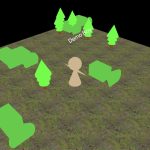In recent years, machine learning has become increasingly popular, providing valuable insights and predictions for a wide range of applications. While Python is often the go-to language for machine learning, Golang is quickly gaining traction due to its simplicity, performance, and concurrency capabilities. In this article, we’ll explore how to get started with machine learning in Golang, along with popular libraries and frameworks to help you harness the power of machine learning in your projects.
Why Choose Golang for Machine Learning?
There are several reasons why Golang is gaining popularity for machine learning applications:
- Performance: Golang is a compiled language, which means it typically offers better performance than interpreted languages like Python. This can be a significant advantage when working with large datasets or complex algorithms.
- Concurrency: Golang’s built-in support for concurrency makes it well-suited for parallelizing machine learning tasks, which can significantly speed up training and inference times.
- Strong Typing: Golang’s strong typing system can help prevent bugs and improve code readability, making it easier to maintain and develop machine learning projects.
- Scalability: Golang’s simplicity and performance make it a great choice for building scalable machine learning applications, especially in distributed systems and microservices architectures.
- Growing Ecosystem: While Golang’s machine learning ecosystem is not as extensive as Python’s, it is rapidly growing with a variety of libraries and frameworks available for different tasks.
Golang Machine Learning Libraries and Frameworks
There are several libraries and frameworks available for machine learning in Golang. Some popular options include:
1. Gorgonia
Gorgonia is a library that provides the necessary primitives for creating and executing deep learning and machine learning models. It offers a flexible computational graph and supports automatic differentiation, making it well-suited for implementing various machine learning algorithms.
Here’s an example of how to create a simple linear regression model using Gorgonia:
package main
import (
"fmt"
"log"
"gorgonia.org/gorgonia"
"gorgonia.org/tensor"
)
func main() {
// Data (features and labels)
features := tensor.New(tensor.WithShape(4, 1), tensor.WithBacking([]float64{1, 2, 3, 4}))
labels := tensor.New(tensor.WithShape(4, 1), tensor.WithBacking([]float64{2, 4, 6, 8}))
// Create a new graph
g := gorgonia.NewGraph()
// Define the model
x := gorgonia.NewMatrix(g, gorgonia.Float64, gorgonia.WithShape(4, 1), gorgonia.WithName("x"), gorgonia.WithValue(features))
y := gorgonia.NewMatrix(g, gorgonia.Float64, gorgonia.WithShape(4, 1), gorgonia.WithName("y"), gorgonia.WithValue(labels))
w := gorgonia.NewMatrix(g, gorgonia.Float64, gorgonia.WithShape(1, 1), gorgonia.WithName("w"), gorgonia.WithInit(gorgonia.GlorotN(1.0)))
b := gorgonia.NewScalar(g, gorgonia.Float64, gorgonia.WithName("b"), gorgonia.WithInit(gorgonia.Zeroes()))
// Define the operation
z, err := gorgonia.Add(gorgonia.Mul(x, w), b)
if err != nil {
log.Fatal(err)
}
// Define the loss function (Mean Squared Error)
loss := gorgonia.Must(gorgonia.Mean(gorgonia.Must(gorgonia.Square(gorgonia.Must(gorgonia.Sub(y, z))))))
// Define the gradient nodes
grads, err := gorgonia.Grad(loss, w, b)
if err != nil {
log.Fatal(err)
}
// Create a VM to execute the graph
vm := gorgonia.NewTapeMachine(g)
// Training loop
learningRate := 0.01
epochs := 500
for i := 0; i < epochs; i++ {
if err := vm.RunAll(); err != nil {
log.Fatal(err)
}
// Update weights and biases
wT := w.Tensor.(*tensor.Dense)
bT := b.Tensor.(*tensor.Dense)
gradWT := grads[0].(*tensor.Dense)
gradBT := grads[1].(*tensor.Dense)
wT.Sub(wT, gradWT.MulScalar(gradWT, learningRate))
bT.Sub(bT, gradBT.MulScalar(gradBT, learningRate))
vm.Reset()
}
fmt.Println("Trained weights:", w.Value())
fmt.Println("Trained biases:", b.Value())
}
This example demonstrates a simple linear regression model using Gorgonia. The library provides many more advanced features, such as support for GPU computation, making it a powerful tool for machine learning in Golang.
2. Gonum
Gonum is a set of numeric libraries for Golang that provides the building blocks for machine learning and scientific computing. It includes packages for linear algebra, probability, statistics, optimization, and more.
While Gonum doesn’t provide high-level machine learning APIs like Gorgonia, it can be used to implement custom machine learning algorithms and models from scratch. This can be particularly useful for specialized applications or when you need more control over the underlying algorithms.
3. GoLearn
GoLearn is a general-purpose machine learning library for Golang. It provides a simple API for working with common machine learning tasks, such as classification, regression, and clustering. GoLearn includes various algorithms like k-Nearest Neighbors, Decision Trees, and Logistic Regression, as well as utilities for data handling and model evaluation.
4. TensorFlow for Golang
TensorFlow for Golang is the official Go API for TensorFlow, a popular open-source machine learning framework. With TensorFlow for Golang, you can build, train, and deploy TensorFlow models using Golang, leveraging the extensive capabilities and ecosystem of TensorFlow.
Conclusion
Golang offers a growing ecosystem of libraries and frameworks for machine learning, making it an attractive choice for building high-performance, scalable, and concurrent machine learning applications. Whether you’re a seasoned machine learning practitioner or a Golang enthusiast looking to explore the world of machine learning, Golang provides the tools and resources to help you succeed.







